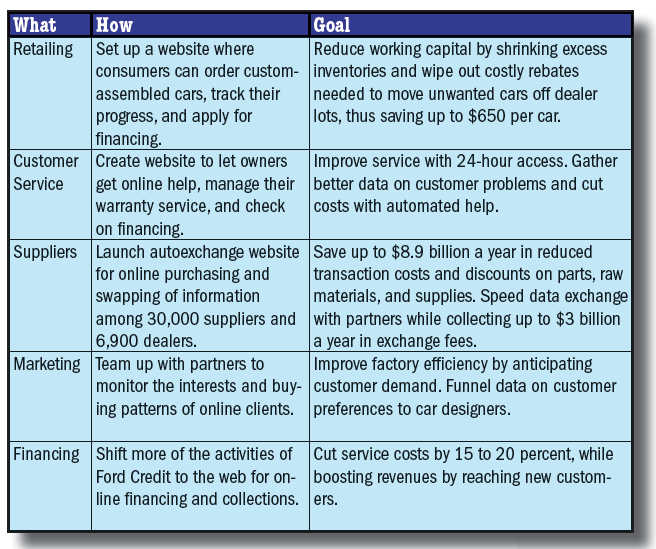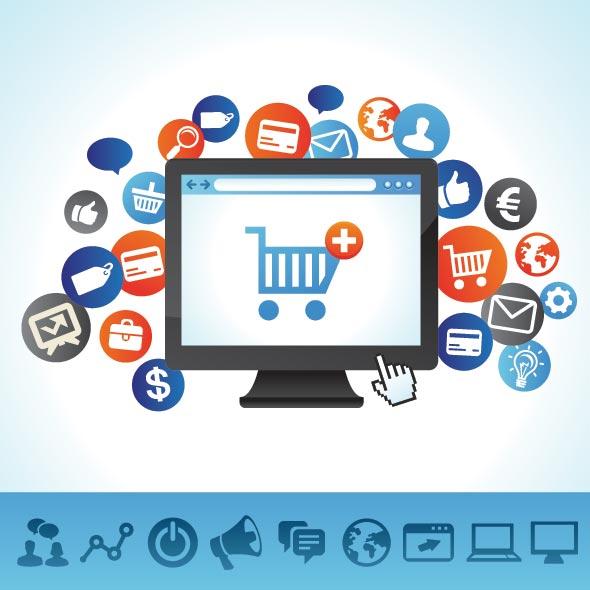- FMA
- The Fabricator
- FABTECH
- Canadian Metalworking
Integrated E-commerce Platforms: A New Model
Using new computer technology saves time, money
- By Mark Doyle
- July 10, 2014
- Article
- Management
Business-to-business (B2B) ecommerce is a new strategy for many businesses that want to optimize their success and profit in today’s increasingly competitive B2B markets. By adopting a digital platform that fully integrates e-commerce, order management, warehousing, logistics, web management, and social media, companies now have the opportunity to significantly increase margin.
The Old Model
Companies struggle today with the old paradigm of B2B transactions. A labor-intensive sales and distribution process adds time, costs, and lots of complexity to each transaction. This encumbers growth.
Is this your company?
- 6 people answering phones
- 4 people filling orders
- 1 person managing invoices
- 2 people managing inventory
- 1 person managing shipping
- 1,000s of printed brochures and collateral
B2B players that fail to fully embrace the online channel risk losing market share in the short and medium term, and sustainable competitive advantage in the long term. Opportunity can be gained from adopting integrated digital platforms for B2B and procurement.
Goldman Sachs predicts more than U.S.$1 trillion in e-commerce transactions will occur globally in 2014. This statistic is important to manufacturing. The Peterson Institute for International Economics has indicated that B2B e-commerce cost savings can reach 20 to 30 percent in traditional manufacturing and 15 percent in heavy industry, when compared to traditional methods.
Adopting E-commerce
Early adopters of digital platforms will benefit the most. Manufacturers and distributors can streamline their sales and fulfillment process. This will reduce cost of sales, ultimately improving competitive position.
Huge advances in platform integration include cloud-based systems and feature-rich application programming interfaces (APIs) with endto- end e-commerce capabilities. Like electronic data interchange (EDI), e-commerce can provide strategic and operational benefits. Strategic benefits include strengthening relationships with buyers in an online and highly immersive experience. Operational benefits include gains in cost efficiency as well as less time and personnel required to complete the sales process.
Reward 1: Operational Efficiency. An e-commerce platform saves time and financial resources by integrating and automating sales and fulfillment transactions, streamlining warehousing and logistics, and building in mission-critical online sales and marketing functions.
Reward 2: Cost Savings. E-commerce lowers the transaction cost significantly by automating the entire process. Sales administration, customer setup, order management, payment processing, account management, inventory management, warehouse administration, logistics management, shipment tracking, email campaigns, and social media marketing are all integrated seamlessly.

Source: Kathleen Kerwin and Marcia Stepanek, “At Ford, E-Commerce Is Job 1, Business Week, Feb. 28, 2000, p. 76.
A cloud-based, managed platform will reduce the need for expensive, highly skilled, internal IT resources and the need for very costly IT infrastructure.
Reward 3: More Dynamic Marketing. Dynamic marketing collateral that will enhance the sales experience can be created. Plus, online collateral is easily viewed on any device from desktop to mobile. Collateral materials can be updated at any time, and at very low cost. There are no limitations to the amount or type of information that can be put online, including highly valued product usage videos and testimonials, which represent some of the best and most cost-effective conversion methods around.
Reward 4: Market Scale. You remain open 24/7/365. This increases the number of orders you can receive, and an “always open” webstore is ultraconvenient. E-commerce provides greater market connectivity and lets you effortlessly scale your market presence using cost-effective, compliant e-mail and social media marketing. The ability to tap into traffic from search engines represents easy and immediate access to new leads and clients.
Reward 5: Maximized ROI. Generate faster ROI with an empowered sales team that can be refocused on new client acquisition. Direct them away from labor-intensive sales and administrative tasks. This will expedite sales growth and optimize your return.
Reward 6: A Better Customer Experience. The online ecosystem enhances client engagement and provides a much richer buying experience. Clients can connect using their preferred technology, anywhere, anytime.
Clients may click through intuitive navigation or use search to immediately narrow down their product. Webstores remember purchase preferences and shopping lists, which allows repeat purchases in seconds— a mutual benefit to both buyer and seller.
The Bottom Line
E-commerce uses technology as a competitive advantage in today’s marketplace. A B2B e-commerce platform with fully integrated end-to-end capabilities may help to streamline your business and improve your bottom line dramatically.
subscribe now


Keep up to date with the latest news, events, and technology for all things metal from our pair of monthly magazines written specifically for Canadian manufacturers!
Start Your Free Subscription- Trending Articles
- Industry Events
MME Winnipeg
- April 30, 2024
- Winnipeg, ON Canada
CTMA Economic Uncertainty: Helping You Navigate Windsor Seminar
- April 30, 2024
- Windsor, ON Canada
CTMA Economic Uncertainty: Helping You Navigate Kitchener Seminar
- May 2, 2024
- Kitchener, ON Canada
Automate 2024
- May 6 - 9, 2024
- Chicago, IL
ANCA Open House
- May 7 - 8, 2024
- Wixom, MI















